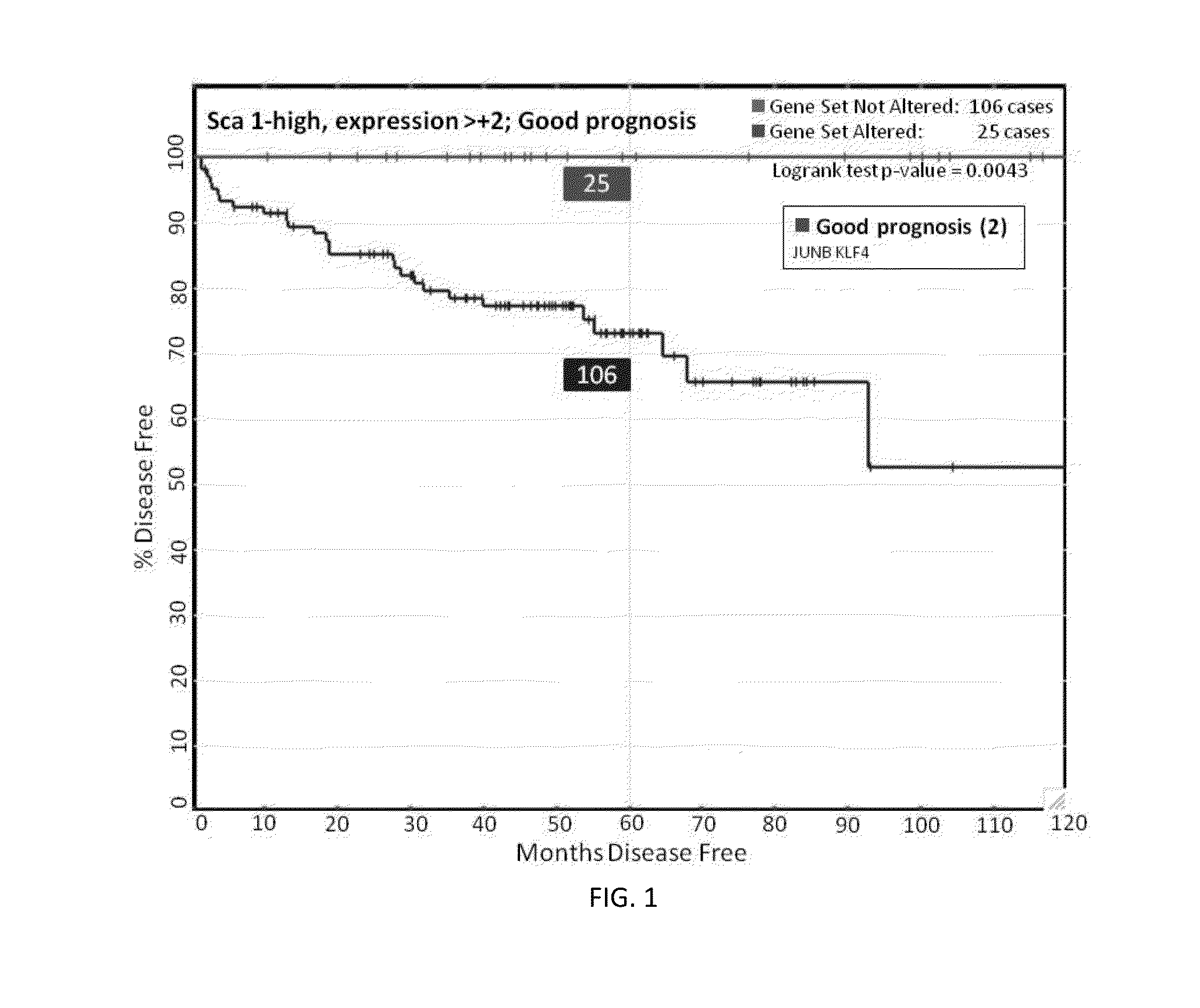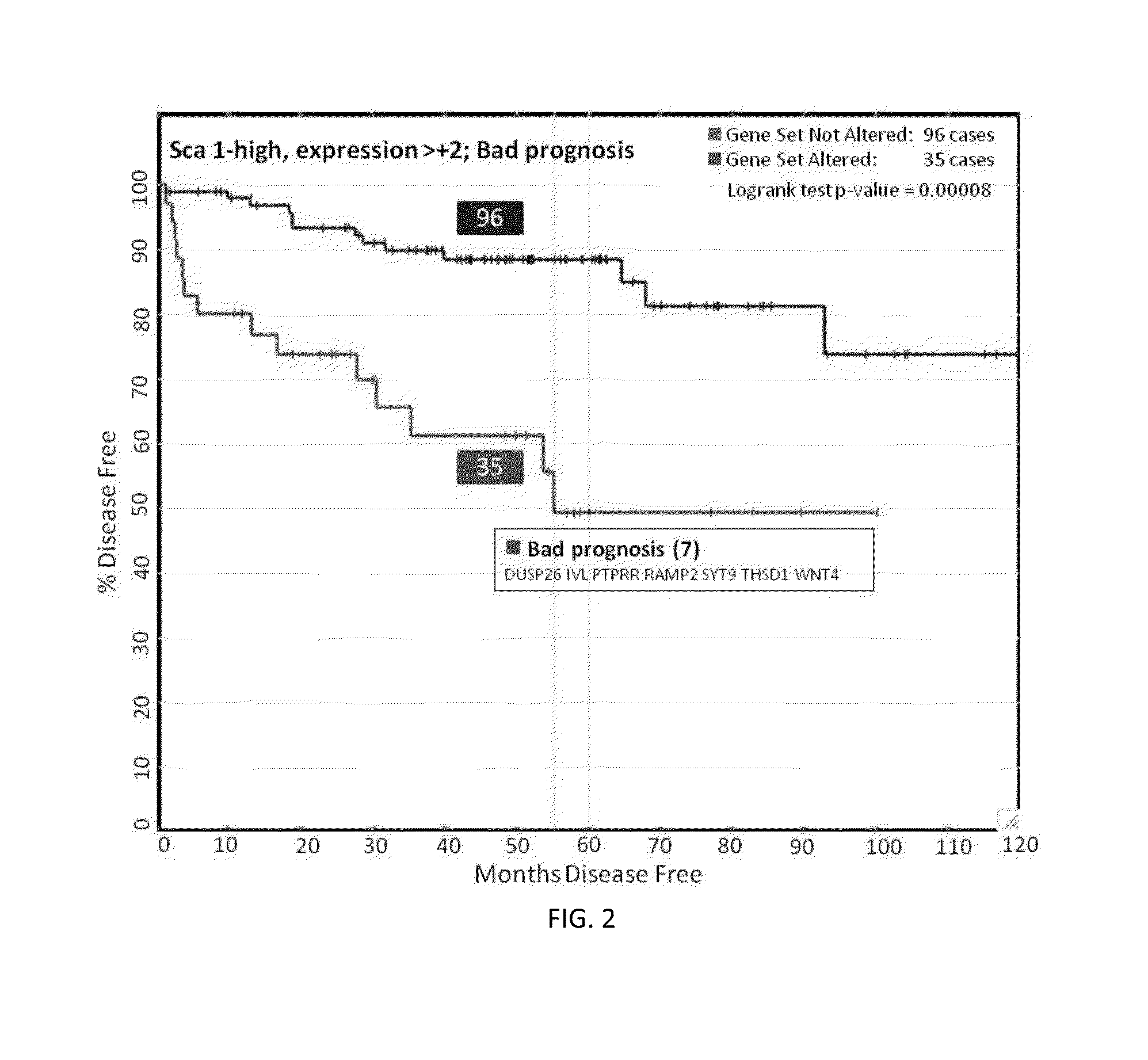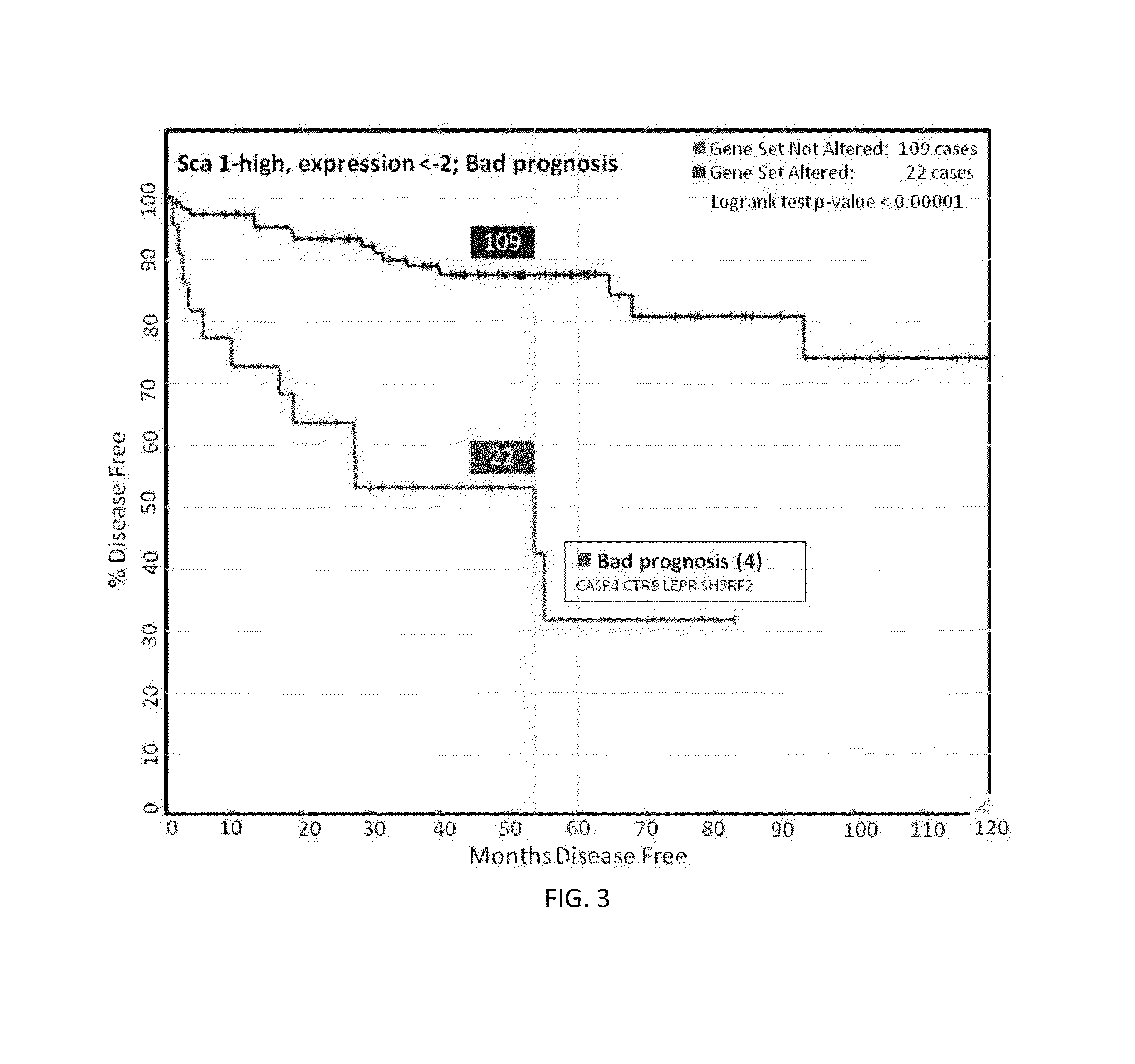Methods and kits for diagnosing the prognosis of cancer patients
a cancer patient and prognosis technology, applied in the field of cancer patient prognosis diagnosis methods, can solve the problems of warranted aggressive treatment, and achieve the effects of less aggressive treatment regimen, high capacity for reconstituting, and good prognosis
- Summary
- Abstract
- Description
- Claims
- Application Information
AI Technical Summary
Benefits of technology
Problems solved by technology
Method used
Image
Examples
example 1
KLF4 and JUNB Inhibit Growth and Impede Transformation of Primitive Primary Murine Prostate Cells
[0150]Compared to non-stem cells, adult prostate stem cells (APSCs) express 29-fold more KLF4 and 5-fold more JUNB, both predictors of good prognosis. ShRNA-lentivirus knockdown (KD) of KLF4 or JUNB in primary proximal cells reduced KLF4 by 91%, and JUNB by 80%. Reduction in the expression of these two genes increased stem cell number and their self-renewal as determined by the percent of cells that formed ducts in 3D-collagen gels (FIG. 16, left panel), their size (1.8- and 3.1-fold for KLF4 and JUNB KD, respectively), and their ability to reconstitute sub-renal capsule (RC) prostate tissue (1.4 fold, p<0.03 and 2.3 fold, p<0.04 for KLF4 and JUNB KD, respectively). These effects were even more pronounced when KLF4 or JUNB were knocked down and the cells were simultaneously transformed by co-infection with RFP-active-AKT-expressing lenti-constructs (FIG. 16, right panel), a pathway activ...
example 2
KLF4 and JUNB Inhibit Growth and Impede Transformation of Stable Murine and Human Prostate Cell Lines
[0151]To establish cell lines to be used as models for testing the role of KLF4 and JUNB, a stable cell line was isolated from a tumor derived from murine Sca-1high stem cells that had been transformed by AKT. Stable AKT / KLF4 KD, AKT / JUNB KD and control cell lines were then generated by infecting cells with sh-lentivirus (reduction of the target genes 87-95%). KLF4 KD (76% reduction) and control lines were also generated using a murine prostate stem cell line, WFU (Barclay et al. “Characterization of adult prostatic progenitor / stem cells exhibiting self-renewal and multilineage differentiation,”Stem Cells 26(3):600-610 (2008); Barclay and Cramer. “Culture of mouse prostatic epithelial cells from genetically engineered mice,”Prostate 63(3):291-298 (2005)).
[0152]In addition, stable KLF4 KD (83% reduction) was generated in a human prostate stem cell line, WPE (Tokar et al. “Stem / progeni...
PUM
| Property | Measurement | Unit |
|---|---|---|
| time | aaaaa | aaaaa |
| time | aaaaa | aaaaa |
| Tm | aaaaa | aaaaa |
Abstract
Description
Claims
Application Information
 Login to View More
Login to View More - R&D
- Intellectual Property
- Life Sciences
- Materials
- Tech Scout
- Unparalleled Data Quality
- Higher Quality Content
- 60% Fewer Hallucinations
Browse by: Latest US Patents, China's latest patents, Technical Efficacy Thesaurus, Application Domain, Technology Topic, Popular Technical Reports.
© 2025 PatSnap. All rights reserved.Legal|Privacy policy|Modern Slavery Act Transparency Statement|Sitemap|About US| Contact US: help@patsnap.com



